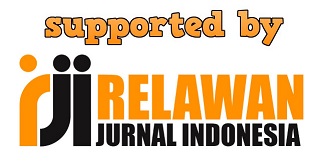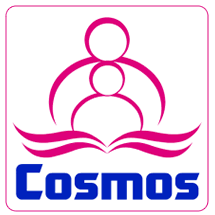CONSIDERATION OF SOCIAL SEMIOTICS IN THE SELECTION OF LEARNING MATERIAL AS PRINTED-BASED LITERACY FOR ELT TEACHER IN 21ST CENTURY SKILL
DOI:
https://doi.org/10.32520/eji.v7i1.2236Keywords:
Social Semiotics, printed-based literacy, English for Language TeachingAbstract
Social semiotics is the study of a group of objects, events, culture, and so on in society as a sign with a specific meaning. This is extremely beneficial when it comes to the selection and production of educational materials in schools for 21st century skill. This study aims to describe the urgency of social semiotic considerations in the selection of learning material as printed-based literacy in English language teaching in schools for 21st century skill. This study used a qualitative method research. The subjects of this study were English language teachers in Riau. The data obtained in the form of the results of filling out a questionnaire in the form of choices and short answers in accordance with the objectives of this study. The data collection technique used is a questionnaire via Google form. This study uses qualitative in analyzing the data obtained. Based on this research, the researcher found that the need for consideration of social semiotics in the selection of learning material as printed-based literacy in English language teaching is very necessary. The biggest difficulty is applying social semiotics as a way of making learning material as printed-based literacy in learning English later. However, the textbook still does not use social semiotics learning material as printed-based literacy in English learning. Therefore, the six language components in social semiotics are needed. With the existence of the six language components in the study of social semiotics, it is hoped that teachers will find it easier to select and make learning material as printed-based literacy in the school environment
References
Atmazaki, Ali, N. B. V., Muldian, W., Miftahussururi, Hanifah, N., Nento, M. N., & Akbari, Q. S. (2017). Panduan Gerakan Literasi. Jakarta: Kementrian Pendidikan dan Kebudayaan.
Bezemer, J., & Jewitt, C. (2009). Social Semiotics. In Handbook of Pragmatics (pp. 1–13). Amsterdam: John Benjamins.
Daher, W., & Thabet, A. I. (2020). Social Semiotics Analysis of Palestinian Mathematics Textbooks for Eighth Grade. JRAMathEdu (Journal of Research and Advances in Mathematics Education), 5(1), 1–12.
Graves, K. (2000). Designing Language Courses : A Guide for Teachers. Boston: Heinle & Heinle.
Halliday, M. A. K., & Hasan, R. (1989). Language, Context, and Text Aspects of Language in a Social-Semiotic Perspective. Oxford: Oxford University Press.
Harmer, J. (2003). The Practice of English Languag Teaching (Fourth). London & New York: Pearson Longman.
Jewitt, C., & Henriksen, B. (2017). Social Semiotics Multimodality. In Handbuch Sprache im multimodalen Kontext (Handbook of Language in Multimodal Contexts). Berlin: Mouton De Gruyter.
Knain, E., Fredlund, T., & Furberg, A. (2021). Exploring Student Reasoning and Representation Construction in School Science Through the Lenses of Social Semiotics and Interaction Analysis. Research in Science Education, 51, 93–111.
Lindrianawati, D. M. (2021). Kontribusi Linguistik Pedagogis dalam Pembenahan Mutu Pembelajaran Bahasa Arab. El-Tsaqafah : Jurnal Jurusan PBA, 19(2), 171–185.
Martin, J. R. (2009). Genre and Language Learning : A Social Semiotic Perspective. Linguistics and Education, 20, 10–21.
Mehawesh, M. I. (2014). The Socio-Semiotic Theory of Language and Translation: An Overview. International Journal of Languages and Literatures, 4(8), 87–96.
Moerdisuroso, I. (2017). Social Semiotics and Visual Grammar: A Contemporary Approach to Visual Text Research. International Journal of Creative and Arts Studies, 1(1), 80–91.
Prayogi, I. (2014). Peranan Linguistik dalam Pengajaran Bahasa (Sebuah Catatan Ringan). Sasindo: Jurnal Pendidikan Bahasa Dan Sastra Indonesia, 2(2), 1–17.
Ramdhani, S., Maryam, S., & Komala, E. (2021). The Life Map for Developing Multiliteracies competence: A Preliminary Study. International Conference on Education of SuryaKancana (Iconnects), 1, 206–211.
Richards, J. C., & Lockhart, C. (2007). Reflective Teaching in Second Language Classrooms. Cambridge: Cambridge University Press.
Ruhimat, T. (2012). Kurikulum dan Pembelajaran (Curriculum and Learning). 2nd Edition. Jakarta: Rajawali Press.
Somantri, D., Upi, P., Daerah, K., & Bandung, C. (2021). Abad 21 Pentingnya Kompetensi Pedagogik Guru. Equilibrium: Jurnal Penelitian Pendidikan Ekonomi, 18(2), 188–195.
Sugiyono. (2016). Metode Penelitian Kuantitatif, Kualitatif, dan R&D. Bandung: Alfabeta.
Weber, W., & Rall, H.-M. (2022). The Semiotic Work Design Can Do: A Multimodal Approach to Visual Storytelling. In Periodical Studies Today: Multidisciplinary Analyses (pp. 187–204). Leiden and Boston: Brill.
Westby, C. (2010). Multiliteracies: The Changing World of Communication. Top Lang Disorder, 30(1), 64–71.




















